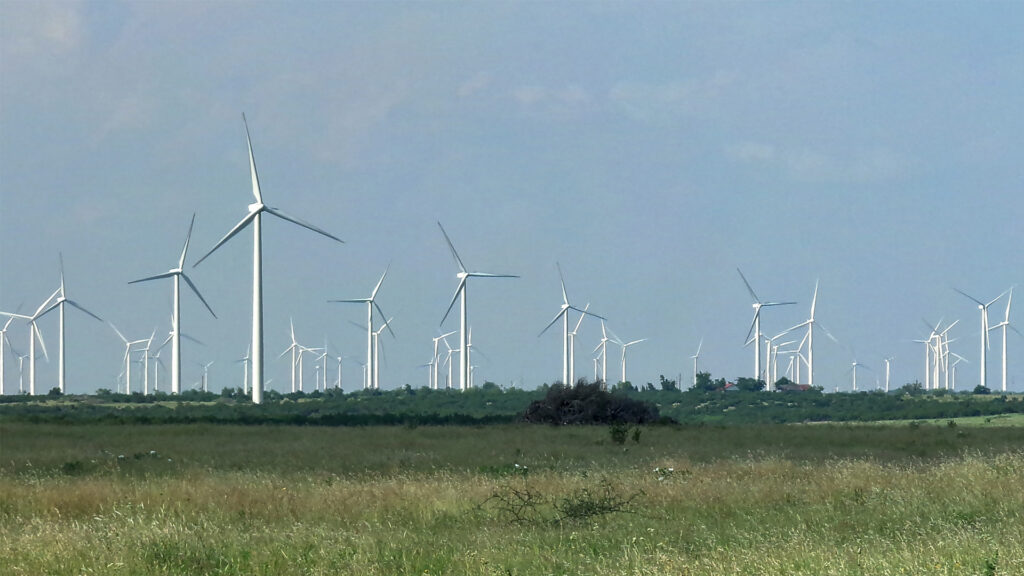By John Ward
In 1936, President Franklin Delano Roosevelt said, “This generation has a rendezvous with destiny.” Our generation is confronted by an even more perilous challenge.
We have an opportunity and a responsibility not available to later generations. The climate threat requires urgent action to preserve as much as possible of our Goldilocks climate – not too hot or cold, not too wet or dry – which is now slipping away.
The newly released third installment of the sixth Intergovernmental Panel on Climate Change (IPCC) climate report reaffirms the good and bad news of the earlier installments. The good news is that we can cut climate emissions in half by 2030. The bad news is that this requires “immediate and deep emissions reductions [of heat-trapping gasses] across all sectors” to prevent a global temperature rise of 1.5 C (2.7 F).
If that rise seems slight, consider that global temperature over the last few years has hovered around 1 C degree above the average between 1951 and 1980, enough to cause devastating weather events. A global heat rise to 1.5 C would greatly increase these effects. Further, the ocean’s rate of heating increased significantly since November 2017, and a new report finds that European glaciers are melting at the fastest rate ever recorded, further speeding sea level rise.
The first section of the sixth IPCC report stated that, while global warming can be stopped by ending the emissions of heat-trapping gasses, “sea level is committed to rise for centuries to millennia due to continuing deep ocean warming and ice sheet melt and will remain elevated for thousands of years.”

Oceans aside, real efforts are being made to stop the overheating that’s causing or intensifying widespread disastrous weather events. In 2022, wind and solar power reached a record 12% of electricity generation globally. The share of low-carbon electricity grew to almost 40% of total generation.
In 2023, the country’s first super-size offshore wind farms will come online, with others on the way. U.S. sales of electric vehicles will continue to accelerate, likely hitting 1 million units per year.
As of Jan. 23, the combined annual green power use of EPA’s Top Fortune 500 Partners is more than 65 billion kilowatt-hours of green power. The Inflation Reduction Act was passed last August, when it seemed that no bill could be passed. It offers about $370 billion of tax credits and incentives for renewable energy and electric vehicles, including money and policies to encourage American companies to make clean energy components.
Current international policies have lowered predicted global warming by 2100 from 4 C degrees to 3, although research finds that lower level is more dangerous than previously thought. These efforts are encouraging, but much more is needed.
What can we do? Personal lifestyle choices can matter, especially reducing the consumption of carbon-based fuel for heating, cooling, and transportation. But until most people do these things, the national and global result will be insufficient.
For other ways to become more effective, investigate Project Drawdown, which has found the most effective ways to make a difference. Inform yourself, share information with friends and encourage their feedback.
Work locally to change minds. Post information on the internet. Write letters to Congress, newspapers and people in power to convince them that voters and purchasers are deeply concerned about our climate’s increasing threat to our way of life. Encourage others to do this too. Meet with your representatives and let them know your concern. Ask what they intend to do about the threat.
Find an effective group and work with its members. And learn from two of the best video presentations on effective climate change communication: George Marshall’s “How to talk to a climate change denier” and Professor Katharine Hayhoe’s “Communicating about climate change.” Don’t just listen to them, use their valuable insights to communicate effectively!

Research finds that humans are responsible for all the climate rise over the past century. Other forces warm and cool the planet, but they just about offset one another’s effects over time. That’s good! It means we have the power to slow and eventually stop the increase in calamitous climate changes by stopping their cause: our emission of heat-trapping gasses.
We must convince those in power that stopping climate change as soon as possible will limit our world’s degradation while protecting the things we most value: our health, our safety, our economy and so much more. Let’s do it!
John Ward was a professor of art history and painting for 42 years, mostly at the University of Florida, and has spent 22 years of his retirement investigating climate change and reporting on it.
If you are interested in submitting an opinion piece to The Invading Sea, email Editor Nathan Crabbe at ncrabbe@fau.edu.



